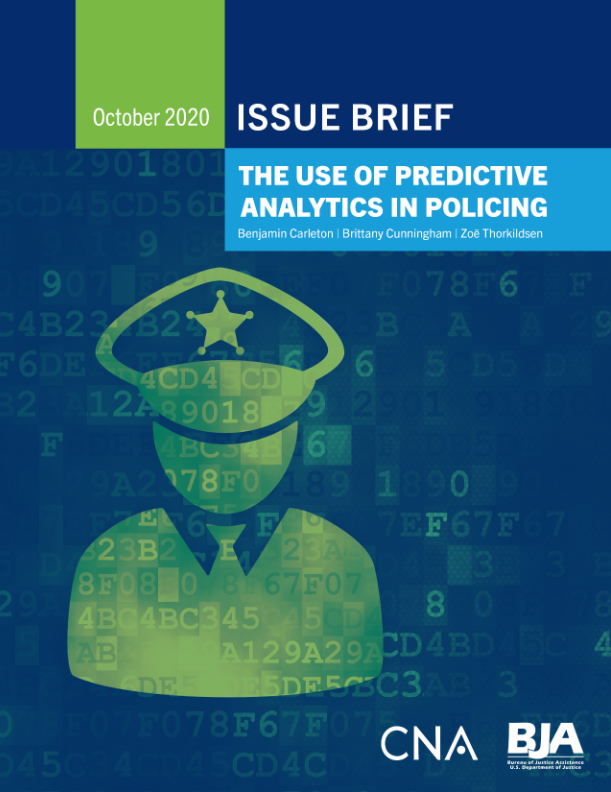Policing is an evolving field; law enforcement agencies are being asked to do more with limited resources, forcing agencies and their relevant stakeholders (e.g., policy makers, other justice system agencies, community organizations) to continuously look for new ways to reduce crime, keep communities safe, and effectively allocate resources. The use of predictive analytics has evolved in the last several decades as a promising response to reduce and prevent crime. Predictive analytics in policing “is a data-driven approach to characterizing crime patterns across time and space and leveraging this knowledge for the prevention of crime and disorder” (Fitzpatrick et al. 2019).
Traditionally, law enforcement agencies have operated using primarily reactive measures, such as rapid responses to 911 calls, random patrols, and a greater focus on criminal investigations (Brayne 2017; Fitzpatrick et al. 2019). To operate more proactively, agencies have increasingly employed predictive analytics that informs crime prevention strategies. For example, agencies across the US have implemented a number of strategies (e.g., hot spot detection, targeted offender lists, and risk terrain modeling) and software programs that use a variety of predictive analytics to forecast where and when crimes are most likely to occur and to identify offenders and groups or individuals at risk of becoming victims of crimes.
Predictive analytics builds on traditional crime analysis practices (e.g., identification of crime trends and patterns). In addition to identifying crime trends and patterns based on crimes that have already occurred, predictive analytics goes a step further, forecasting where and when crime is likely to occur or who is likely to be involved in criminal behavior. It equips agencies with knowledge (i.e., data) to help inform where they should target police operations and resources. Agencies can use this knowledge to operate more efficiently and effectively in their crime reduction efforts and resource allocations. It is important to understand that predictive analytics cannot tell the future very well. These predictions rely on past data and assume that future criminal activity will be similar to that reflected in extant data (sometimes factoring in anticipated future changes). This reliance on past data also means that predictive techniques can reinforce systemic bias, racial and otherwise, present in past justice system actions.
The objective of this brief is to provide an accessible resource for law enforcement agencies and their stakeholders (e.g., crime analysts, policy makers, and researchers) interested in learning more about the role of predictive analytics in police operations. Specifically, this brief offers the following:
- Summarizes the use of predictive analytics to inform policing operations
- Distinguishes between approaches to predictive analytics (person-based and place-based)
- Highlights the emergence of machine learning algorithms as a preferred predictive analytics technique
- Delineates considerations and limitations brought forth in recent literature that law enforcement agencies must consider when using predictive analytics to reduce and prevent crime
- Summarizes several research studies and real-world policing initiatives as examples of how the use of predictive analytics can inform policing practice
This work was performed under BJA-2018-DP-BX-K015. This project was supported by Cooperative Agreement Number BJA-2018-DP-BX-K015 awarded by the Bureau of Justice Assistance, U.S. Department of Justice. The opinions contained herein are those of the author(s) and do not necessarily represent the official position or policies of the U.S. Department of Justice. References to specific agencies, companies, products, or services should not be considered an endorsement by the author(s) or the U.S. Department of Justice. Rather, the references are illustrations to supplement discussion of the issues.
Details
- Pages: 32
- Document Number: IIM-2020-U-027459-Final
- Publication Date: 10/1/2020
